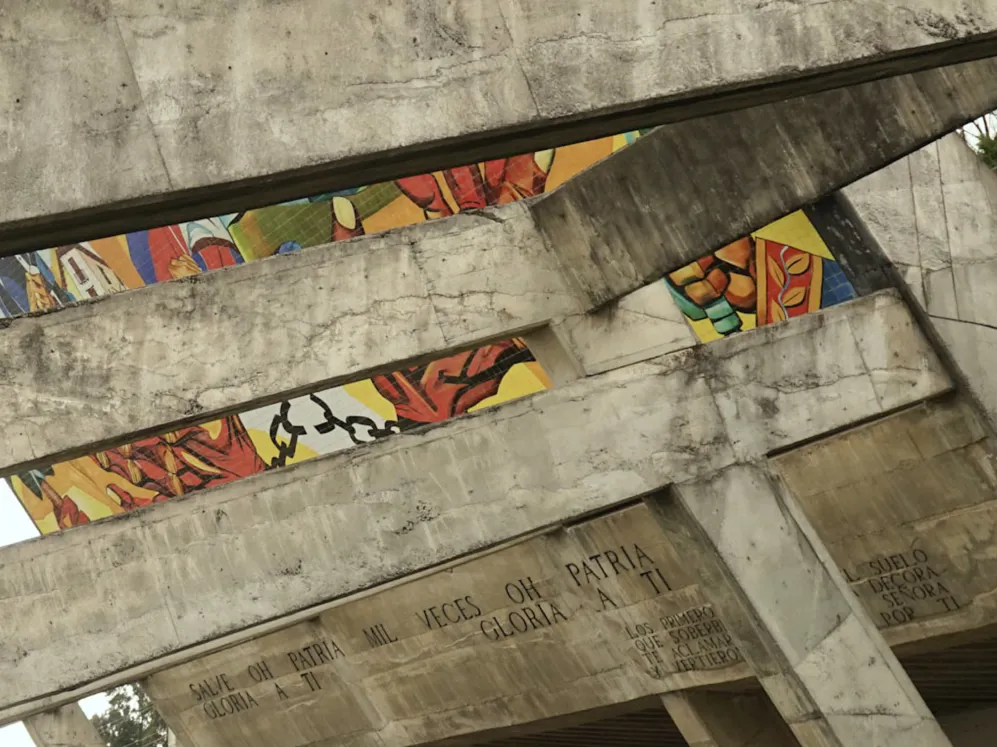
Words Adam ŠtěchImages Adam Štěch and Nicole KudělkováDate 08 February 2022
Picturesque narrow winding streets are nestled in a hilly terrain on a 2,820-meter-plateau. In the 1930s, when historical and colonial styles were still dominant, Ecuador saw the first trickling of the modern movement. There were just a handful of architects who tried to escape the Neo Gothic and colonial schools during this time. Alfonso Calderón Moreno and Leonardo Arcos Córdova both worked in the Eclecticism and new Art Deco movements, mixing them with the local traditions of colonial and pre-Columbian architecture. But Ecuador’s distinctive modern architecture was mostly developed by central European immigrants, who came before the Second World War.
One of the most important architects who moved to Quito at this time was Karl Kohn. We were incredibly lucky to be able to stay in Kohn’s house for few days and talk to his daughter Katya Kohn who kindly welcomed us and showed us around the city.
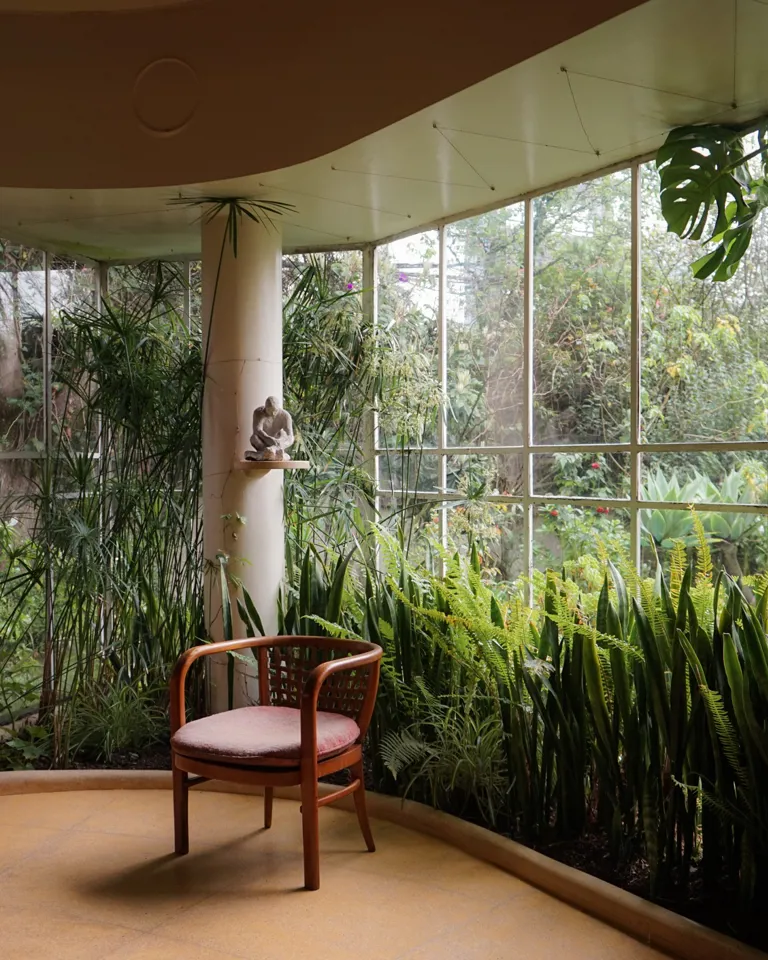
Casa Kohn Won the Premio al Ornato prize in 1952
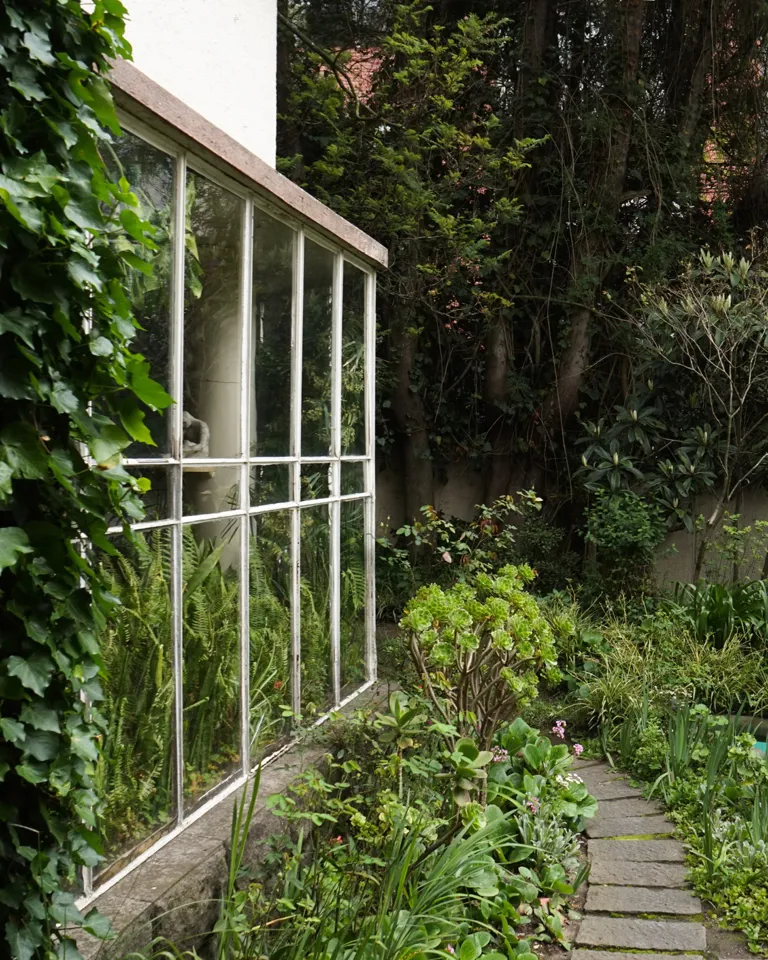
Flexibility in design Casa Kohn is built on a complex network of load-bearing walls
Hailing from a rich Jewish family in Prague, Kohn and his brother Otto completed a number of outstanding architectural projects in Czechoslovakia in the 1920s-30s. They designed villas and residential tenement houses as well as the interiors of apartments, shops, and cafes. The Kohn family, who were originally headed to Argentina, ended up in Ecuador because it had a better immigration policy.
Kohn and his wife Vera settled in the Mariscal district, where he built dozens of private residences during the 1950s. The Czech architect combined his Prague functionalist experience with the new cultural and climatic environment of Latin America by including larger glass surfaces and pitched over-hanging roofs to protect the interior against the sun. Undoubtedly the most significant of his works is his house Casa Kohn, which he completed in 1951 and inaugurated with President Galo Plaza. The award-winning building was the most modern structure in the country with smart built-in furniture, a glazed conservatory, a stone fireplace, and wrought iron lamps and railings.
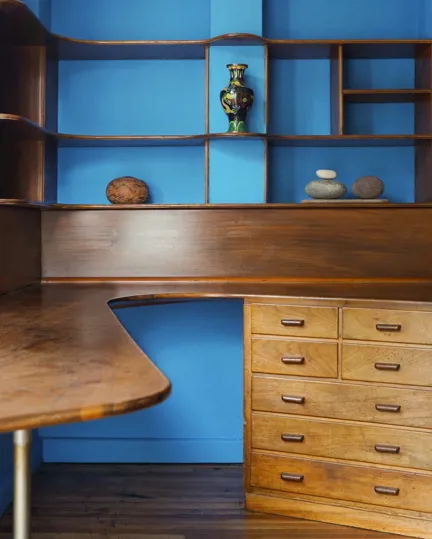
Most modern The smart built-in furniture at Casa Kohn

National archive Built by Jaime Dávalos Proaño in 1955
Czech architect Otto Glass Pick mainly designed structures for young artists, such as a studio for painter Jan Schreuder in 1957 and a house and gallery for artist, folk art collector, and retailer Olga Fisch in 1952, which still exists today. Some of the original features of the Olga Fisch Folklore Flagship Store remain intact such as the curved wooden staircase with its built-in shelves and a stone-clad wall with a built-in fireplace. A combination of pure modernist lines and rustic vernacular elements is typical for both Pick and Kohn.
The 1950s saw the rise of the International Style with a new generation of architects such as the prolific Austrian architect Oscar Etwanick. His most celebrated work is Edificio Casa Baca, a multi-purpose building with large garages, built in 1949-51. The building’s glass and steel suspended facade is accompanied by colorful ceramic-clad surfaces and expressionist elements. Another example of Etwanick’s architecture, this time influenced by the Streamline Moderne style, is Edificio Emetel Norte, built in 1956.
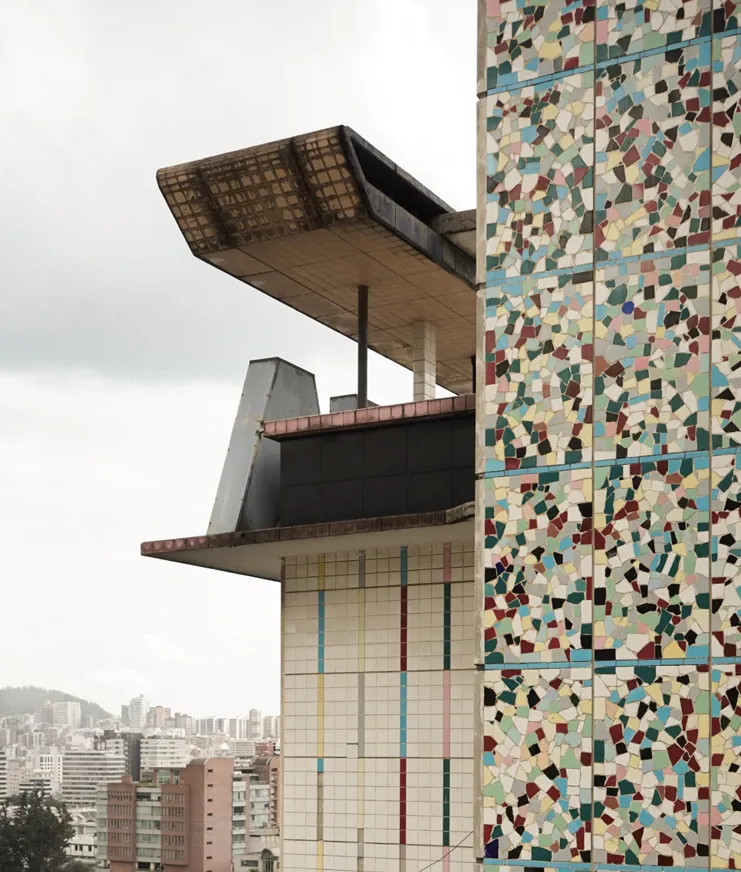
Casa Baca Part of the facade is covered in Cuenca tiles
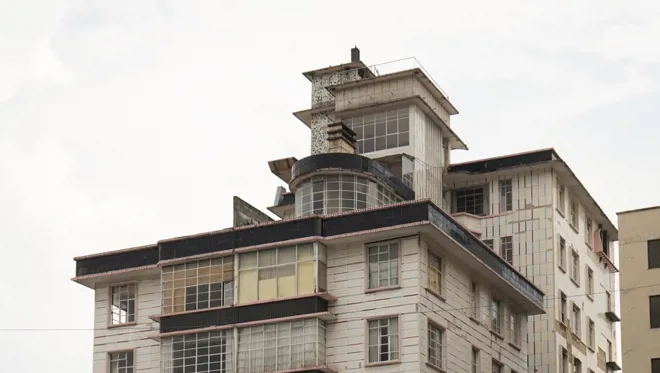
Architect Oscar Etwanick Casa Baca combines elements of Art Deco, rationalism and expressionism

Original staircase Etwanick's design remains unchanged
The postwar period brought modern construction techniques to Quito. The use of thin concrete vaults, predominantly influenced by the experimentation of Félix Candela in Mexico, can also be seen in number of interesting structures around the Ecuadorian capital. In 1959, Alejandro Segovia designed an expressive parabolic concrete canopy in front of Hotel Quito as an elegant sharp-edged roof. Similar forms characterize the former gas station pavilion El Ejido by Agustín and Fabián Patiño, designed in 1961. Its roof is covered in multicolored ceramic mosaic. Edificio de la Cruz Roja (1955-1957) by the brothers Enrique and Lionel Ledesma stands out for its organically curved façade.
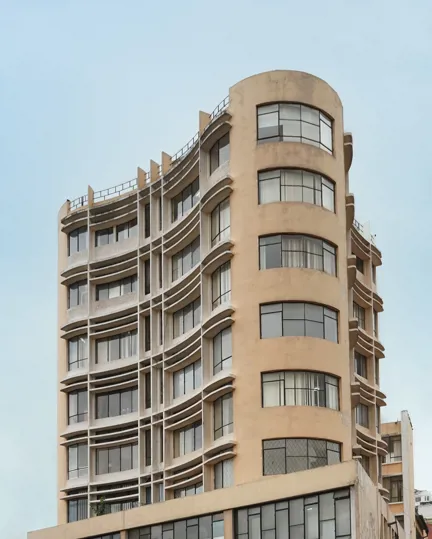
Edificio de la Cruz Roja The curved forms of Streamline Moderne

Casa Miravelle Architect Juan Espinoza showcases a vernacular approach to architecture
Milton Barragán Dumet is one of the few representatives of 20th century Ecuadorian architecture whose work has been published in an international context. He still works in his office, where he welcomed us with a friendly smile. Located in the Barranco residential and office complex he built in 1993, his office still produces high quality work that are loyal to his idealistic visions.
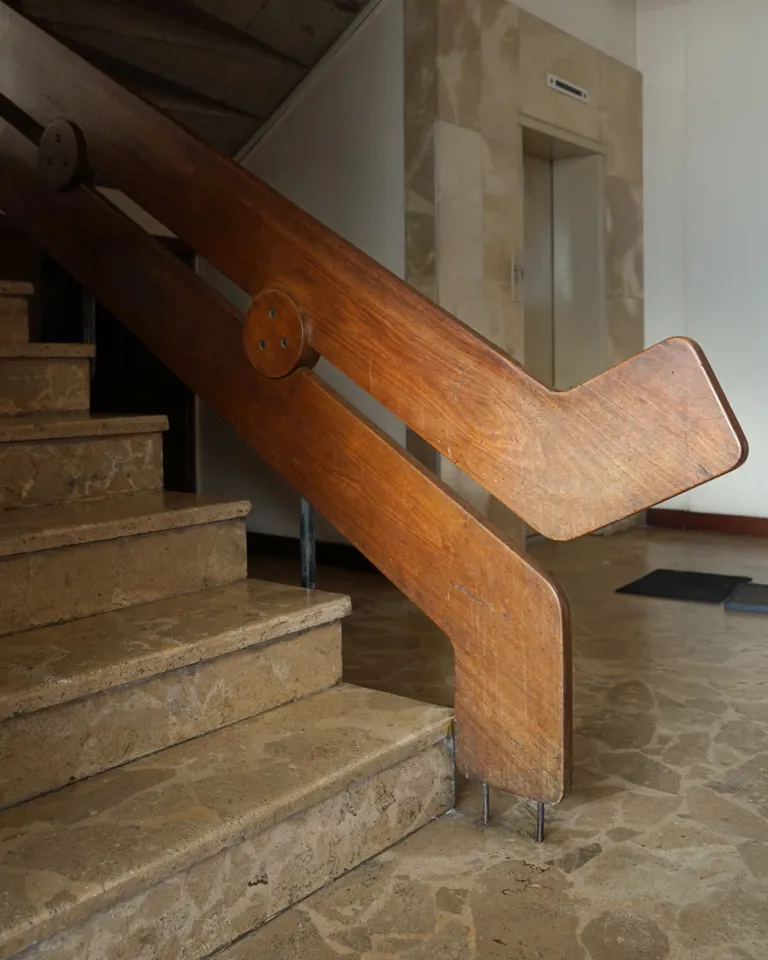
Edificio Artigas Milton Barragán's original wooden handrail

Barranco residential and office complex Barragán still works from here
In the 1960s, Barragán’s favorite material was raw concrete. To understand the logic of the new architecture of the time, he traveled to Europe and worked in France, Italy, Denmark, and Netherlands. He was inspired by the work of Le Corbusier and Studio BBPR. Upon his return to Ecuador, this visionary built several structures, which remain among the most interesting projects of this era. The purest example of his Brutalist aesthetic is Edificio Artigas, built in 1972, whose richly articulated facade has a sculptural appearance with original details in the lobby, such as the wooden handrail. Designed in 1982, Atrium has a cascading form providing spectacular views and a colossal interior atrium that houses commercial spaces on the ground floor.
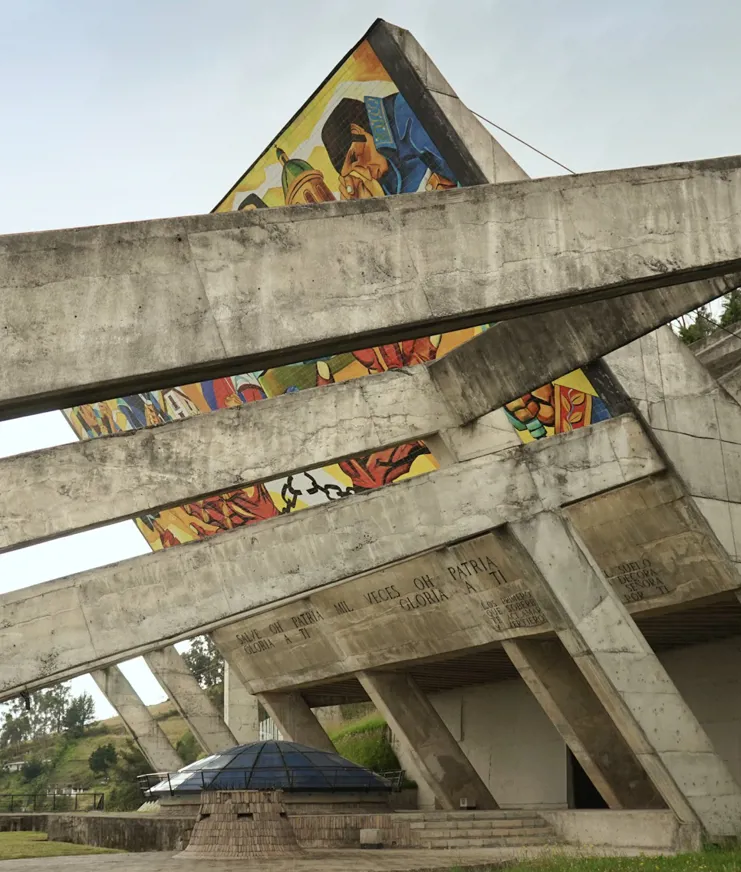
Templo de la Patria Barragán tried to connect to the mountainous setting through large concrete ribs of girders
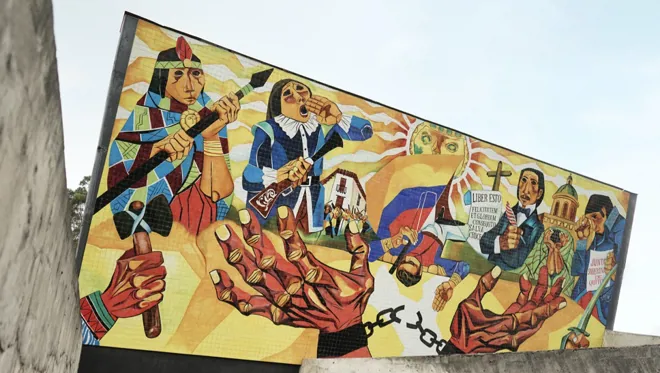
Ceramic fresco Visual artist Eduard Kingman depicts the legendary battle of Pichincha in 1822

At the base A historical military museum
Barragán’s pivotal project is the monument to the legendary battle of Pichincha in 1822 when the rebel army of Marshal Antonio José de Sucre expelled Spanish royalists from the city, freeing the country from its rule. The monument Templo de la Patria is partially sunken into the steep terrain. At the basement is a museum and above is an eloquent building that stretches along the contour of the hill, creating a monumental architectural landscape with its concrete pillars. The structure decorated with an impressive ceramic fresco by the famous local visual artist Eduard Kingman.
Other Brutalist projects of note in Quito include Teatro Politécnico, built in 1965 by architect Oswaldo de la Torre Villacreces and large-scale projects by Czech-origin architect Ovidio Wappenstein such as Edificio CFN (1977) and Hotel Hilton Colón (1975). Wappenstein’s house, which we visited, is however characterized by a more intimate vernacular approach in its use of warm natural materials such as bricks and wood instead of technocratic concrete and steel.

Teatro Politécnico Villacreces' edifice features powerful volumes and texture
In opposition to the strict modernist and raw Brutalist tendencies of the 1960s, the next generation of architects became interested in global alternatives. They were influenced by a natural sensibility for materials and the revival of traditional construction techniques, found in the indigenous culture and colonial architecture, in new forms. Iglesia Luterana, built by Max Ehrensberger in 1959, in the Mariscal neighborhood reflects this recess of International Style in favor of a more rustic and regionalist aesthetic. The whitewashed brick structure uses natural materials and unobtrusive details to merge with its surrounding.
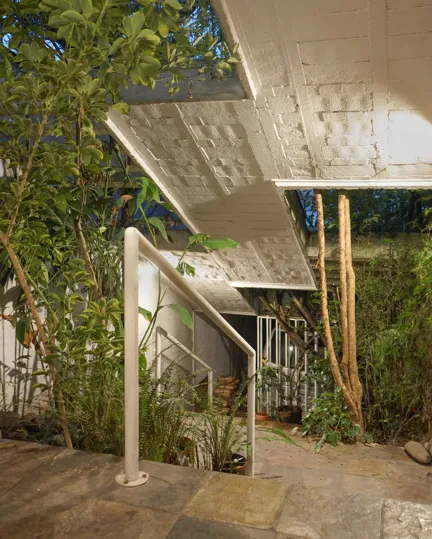
Brick The whitewashed structure uses natural materials
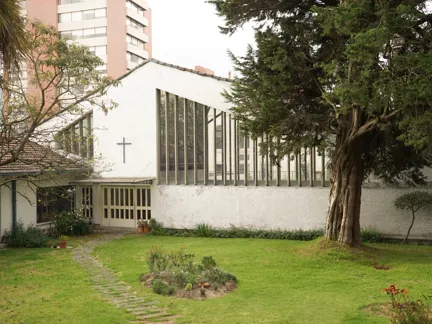
Iglesia Luterana Architect Max Ehrensberger favors a rustic and regionalist aesthetic
The new vernacular tendencies, which opposed radical modernist theories, were practiced mainly by a collective of architects called Grupo 6, including Juan Espinoza, Rodrigo Samaniego, Rubén Moreira, Mario Solis, and Fernando Jaramillo. Casa Araceli, built by Solis in 1973, with its whitewashed bricks, wood, and angled sloping roofs defines this vernacular movement of the 1960s-70s.
Built in the 1970s, the former studio and residence of Ecuador’s legendary artist Oswaldo Guayasamín by Gustavo and Diego Guayasamín interpreted colonial haciendas in a new way. The pure white silhouettes of the house beautifully contrast with the green landscape and create timeless forms. The house, which we visited together with one of original architects Diego Guayasamín, is now open as a museum and visitors can explore not only the artist’s paintings but also the original spaces where he hosted and painted portraits of celebrities, creatives, and politicians from all over the world.
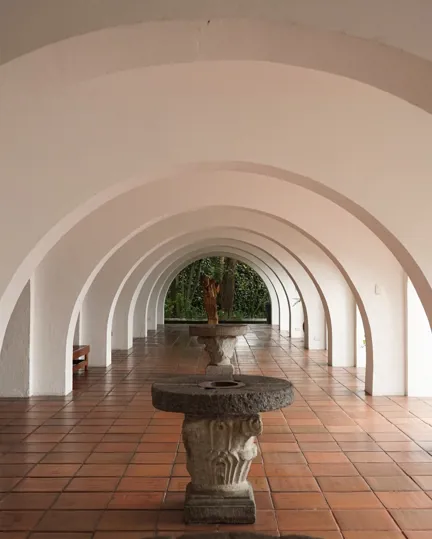
Pure white silhouettes Timeless forms contrast with the green landscape

Guayasamín’s house and atelier Reinterprets colonial haciendas
To learn how the contemporary generation of architects evaluates the qualities and problems of the modern movement and its idealist vision, we met Pablo Moreira and Yadhira Álvarez who run MCM+A Teller de Arquitectura. Their award-winning project, Conjunto La Tola was constructed on a steep slope and consists of differently positioned brick and concrete structures at several levels, interconnected via elevated stairs and platforms. This beautiful residential complex expresses the narrative of the tightly positioned buildings of Quito’s historic center through local materials such as brick and wood.
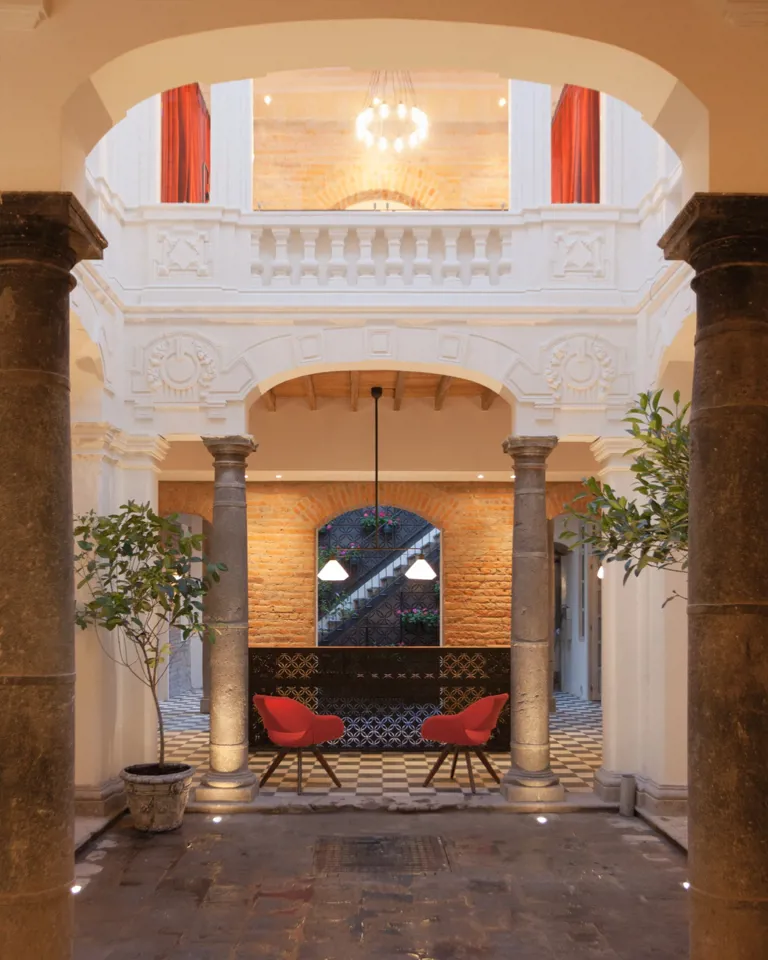
Carlota The hotel is housed inside an historical palace
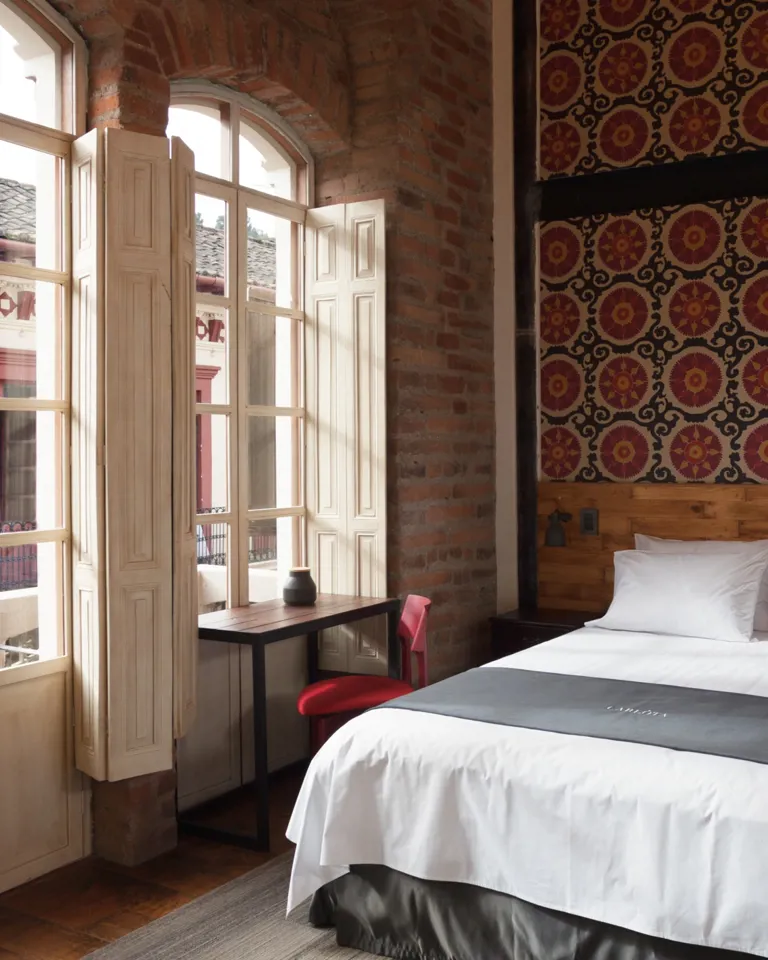
Sensitive restoration A fresh layer of contemporary design was added
We were also lucky enough to spend a few nights in Carlota, a modern environmentally friendly hotel by Veronica Reed and her partner Renato Solines. Housed inside an historical palace in the old center of Quito, the hotel was designed by Reed with the help of her studio VIVA Arquitectura and Sustainable Design Studio. They undertook the sensitive renovation of the historical architecture, adding a fresh layer of contemporary design. While the impressive atrium works as a lobby and public area, the rooms are furnished with modern furniture and highlighted with a combination of rustic materials and earthy tones.
With these examples of contemporary architecture in Quito, we finish our adventure of exploring history and modern Ecuadorian architecture and design.